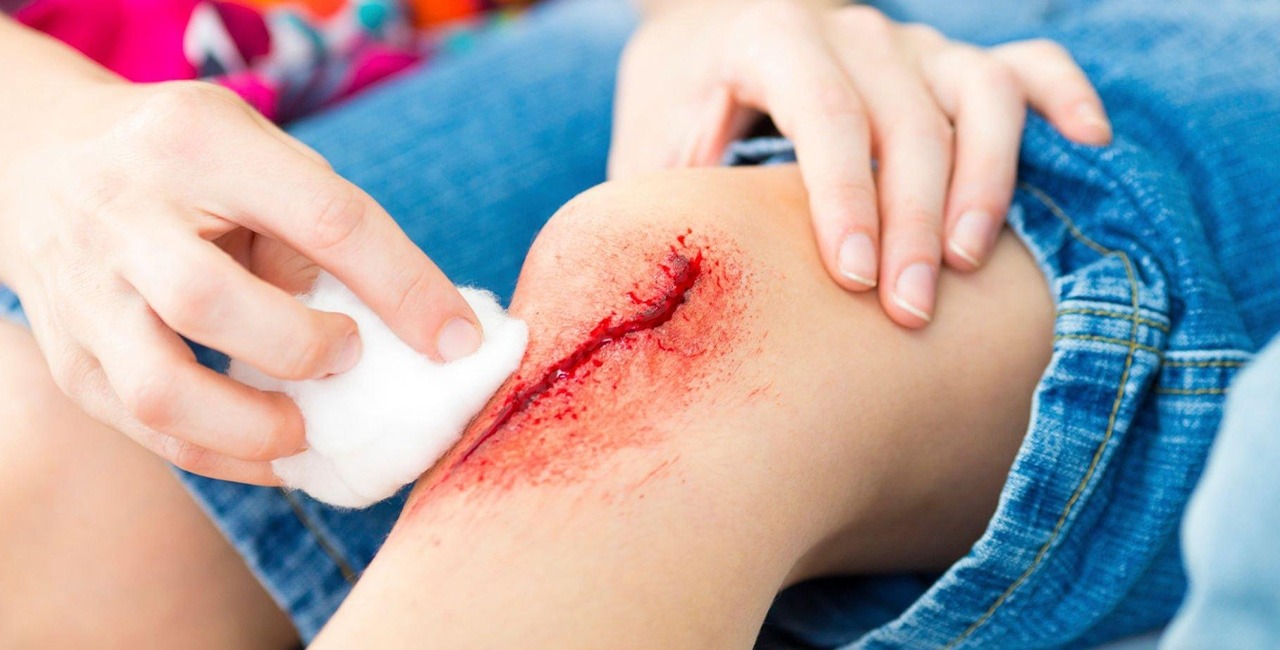A laceration wound is a type of injury that occurs when the skin and underlying tissues are torn or cut, often as a result of trauma or accidents. Lacerations can vary in size and depth, ranging from small superficial cuts to deep, extensive wounds.
What is Laceration Wound?
Laceration wounds are characterized by a break or tear in the skin, which may expose underlying tissues, blood vessels, or organs. These wounds can occur anywhere on the body and can be caused by sharp objects, blunt force, falls, or accidents.
Benefits of Laceration Wound
1. Wound Closure:
- Treatment of lacerations aims to close the wound, reducing the risk of infection and promoting healing.
2. Minimized Scarring:
- Proper wound care and closure techniques can help minimize scarring.
3. Prevention of Infection:
- Prompt treatment reduces the risk of infection, which can be a significant concern with open wounds.
4. Restored Function:
- In cases of deeper lacerations involving underlying structures, proper treatment can help restore normal function.
Treatment Process
At ZenKai, our Laceration Wound repair procedures are designed with precision and care, prioritizing your comfort and the best possible outcome. Here’s an insight into what this treatment involves:
1. Assessment:
- Healthcare professionals assess the laceration’s size, depth, and location, as well as any associated injuries.
2. Cleaning:
- The wound is cleaned thoroughly to remove debris, dirt, and bacteria. This is usually done with sterile saline or a mild antiseptic solution.
3. Anesthesia:
- In some cases, local anesthesia is administered to numb the area around the laceration, ensuring the patient’s comfort during the repair.
4. Wound Closure:
Depending on the nature of the laceration, various methods may be used for wound closure:
- Sutures (Stitches): Sutures are used for deep or long lacerations. They help align the edges of the wound to promote healing.
- Staples: Staples may be used for linear or scalp lacerations.
- Tissue Adhesive (Glue): Tissue adhesive is used for small, superficial wounds where minimal tension is present.
- Steri-Strips: Steri-strips are adhesive strips used to hold the wound edges together, often used in conjunction with sutures or staples.
5. Dressings:
- Once the wound is closed, a sterile dressing or bandage is applied to protect it from contamination.
6. Follow-Up Care:
- Patients are advised on wound care, including cleaning, changing dressings, and keeping the wound area dry. They are also given instructions for monitoring the wound’s healing progress.
Results and Duration
ZenKai’s Laceration Wound repair ensures the wound heals optimally, minimizing scarring and promoting swift recovery. Learn more about the expected results and duration of this wound repair procedure.
1. Results:
- With proper treatment and wound care, laceration wounds typically heal well. The results include wound closure, reduced risk of infection, and, in many cases, minimized scarring. The appearance and function of the affected area are generally restored.
2. Duration of Results:
- The duration of wound healing varies depending on factors such as wound size, depth, and location, as well as the individual’s overall health. Superficial lacerations may heal within a week or two, while deeper or more complex lacerations may take several weeks to fully heal. The wound may continue to change in appearance over time, with scar remodeling occurring for months to years after the injury. Follow-up appointments with a healthcare provider may be necessary to monitor the healing process and address any complications.
